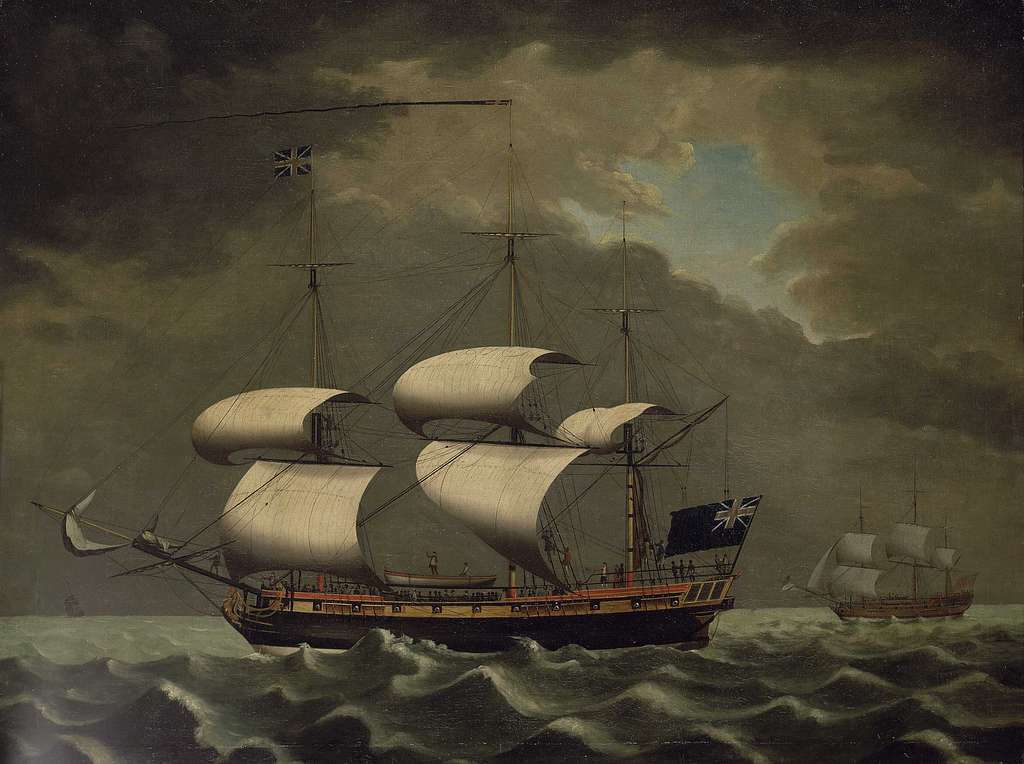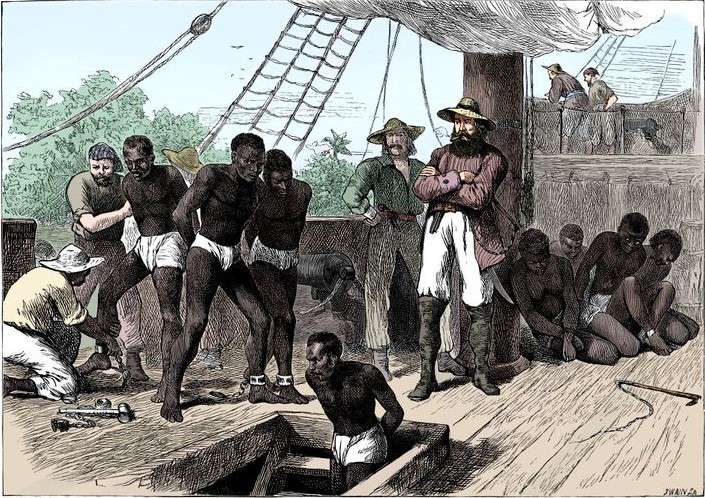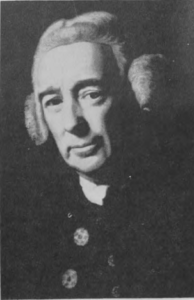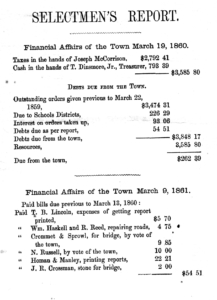Up and down the Kennebec Valley: Slave trade in Vassalboro
by Mary Grow
The story of Ebenezer Farwell
Maine, including to some extent small inland towns like Vassalboro, was more heavily involved in the international slave trade than many residents realize, both before and after slave-trading was made illegal in the United States in 1808.
Dr. Kate McMahon, Museum Specialist at the Center for the Study of Global Slavery, in the Smithsonian Institution’s National Museum of African American History and Culture, gave more than four dozen local residents a history lesson Aug. 13 at the Vassalboro Historical Society’s museum in East Vassalboro.
Slavery has existed for centuries, McMahon said. In the 15th century, two developments converged to create a new, primarily race-based system: bigger ships and better navigational tools let European sailors reach Africa, and Europeans began colonizing the Americas.
In the Americas, first south and then north, indigenous inhabitants were eliminated and Europeans began plantation economies that needed labor. From the 1600s on, McMahon said, an estimated 12.5 million Africans, two-thirds of them men, were loaded onto slave ships for the Middle Passage, the voyage to the Americas. An estimated 10.7 million survived the trip.
Maine’s share in the slave trade McMahon described as small, but as brutal as anywhere else in the United States. It was concentrated in the earliest-settled areas, southern coastal Maine and Portland.

A painting of a Liverpool based ship believed to be involved in the slave trade. It bears strong similarities to the same artist’s image, ‘Liverpool Slave Ship’, painted circa 1780, and now at the Merseyside Maritime Museum. There are a number of figures visible on deck, some are thought to be slaves and others slave masters and sailors. The precise circumstances of this painting are not clear, and it may have been commissioned for the Liverpool offices of a bank or merchant involved in slavery to present an acceptable view of the trade. This coincides with the moment when the abolitionist movement was beginning to pose a serious threat to such traffic.
There is little information about the topic, because, McMahon said, there has not been a lot of interest in research; and many records, like ships’ logs, remain hidden in local museums and other repositories. There is also a misbelief that a merchant ship and a slave ship were two different vessels. McMahon said often the same ship would carry merchandise and slaves.
In 1787 and 1788, within half a decade after the United States became independent, Rhode Island, Massachusetts and Connecticut banned slave-trading. Because different state regulations led to confusion, their officials pushed for a national law. In 1808 Congress made slave-trading illegal nationally.
McMahon explained that the ban applied to transporting slaves among countries abroad and into the United States. The internal slave trade remained legal until the 1863 Emancipation Proclamation.
In 1820, the ban was strengthened by defining transporting slaves as piracy, punishable by hanging. McMahon said alleged slave-traders were seldom punished. (An on-line source says in 74 trials between 1837 and 1860, there were many acquittals and some light sentences. One man was sentenced to death; he was pardoned by President James Buchanan in 1857).
The only man hanged for slave-trading, McMahon said, was Nathaniel Gordon, of Portland, Maine, in 1862. She said President Abraham Lincoln, fighting the Civil War and preparing for the Emancipation Proclamation, was “grandstanding” when he refused to pardon Gordon.
After 1807, fewer slaves were brought to the United States, but many United States citizens continued to transport slaves from Africa to other places in the Americas, like Cuba. One such ship captain was Ebenezer Farwell, of Vassalboro.
This Ebenezer Farwell was one of four sons of Ebenezer Farwell (1740 – 1807) and Jane Howard Farwell (1742 – 1806), according to an on-line source that lists the three youngest by date of birth – 1783, 1785 and 1787 – but does not include their first names.
McMahon did not give Ebenezer’s dates. She said in 1838, he was captain of the ship Transit, and in it picked up four male Africans from a place near the border between Liberia and Cote D’Ivoire (Ivory Coast). Three he brought to New York; one he brought home to Vassalboro and left with his father at their River House as an indentured servant.
New York abolitionists got on Farwell’s case. Farwell was not punished, but a judge ordered the Africans, including the young man in Vassalboro, be sent home to Africa.
By now, McMahon said, Farwell was wealthy enough to start building the Riverside Drive house known as the Farwell Mansion. When funds ran out, he went back to the same part of Africa, this time in a schooner named the Mary Carver.
What happened next is unclear, McMahon said, but Farwell and his crew were killed by Africans. She believes it was “a slave-trading deal gone bad.”
The United States government retaliated by sending the sloop of war USS Saratoga, under Commodore Matthew Perry, for what McMahon called “swift and brutal retribution.” United States sailors razed between 50 and 100 villages and killed King Ben Krako, who may have been responsible for Farwell’s death.
McMahon said Farwell’s wife and sons never lived in the mansion. She and audience members talked about the local story that the house became a stop on the underground railroad that helped escaped Southern slaves to freedom before the Civil War.
On-line sites repeat the story, crediting a man named Israel Weeks.
The USS Saratoga was built at the Portsmouth shipyard in 1842, McMahon said, the first of a number of government ships built specifically to look for slave traders. Because of their illegal business, the traders had fast ships; the Navy needed to match them.
Maine, with its good wood supply and its well-developed techniques, built some of the fastest ships available. Between 1850 and 1865, McMahon said, Maine ships brought some 25,000 slaves from Africa to sell them in Cuba.
Profits were immense; and often owners and captains could increase them by bringing Cuban products, like sugar and mahogany, to the United States.
To maximize profits, McMahon added, these later slave ships were often even more overcrowded than earlier, legal ones, and mortality rates were higher.
Because so many Maine-built ships and Maine captains were involved, the state’s economy was tied to the illegal slave trade. McMahon cited two figures: in 1852 (according to state records), the timber industry was worth $2.5 million; that same year (according to an 1857 New York Times report), the slave ship fleet brought in $11 million.
Mike Lokuta, current owner of the Farwell Mansion, told Sunday’s gathering he is restoring the house. He started by replacing footings under the tall columns across the front; four are done and the fifth soon will be.
Twentieth-century renovations he is undoing include removing two layers of sheetrock.
In a later email, Lokuta said the Farwell Mansion is not the same as Seven Oaks, an earlier Farwell house that Lokuta understands burned in the 1790s.
(In her 1971 Vassalboro history, Alma Pierce Robbins wrote that Isaac Farwell built Seven Oaks for his son Eben (1740 -1807), and said, apparently in error, that it was the columned house still standing.)
Lokuta said Seven Oaks’ foundation and a nearby well casing remain behind the mansion. They might have given rise to the story, which Lokuta says is untrue, that in Underground Railroad times a tunnel ran from the Kennebec River to the house. Many sources mention a tunnel into the cellar of the house, without further explanation.
Maine native Dr. Kate McMahon
Dr. Kate McMahon is a Maine native who earned her bachelor’s and master’s degrees from the University of Southern Maine and her doctorate in history from Howard University, in Washington, D.C. Her field of concentration is slavery in the United States and related topics.
Some years before her Aug. 13 presentation, she had visited the Vassalboro Historical Society museum to look for information on Farwell, where she met members Simone Antworth, who introduced her to Sunday’s audience, and Russell Smith. That visit led to Sunday’s talk.
Asked if the VHS records had been helpful, McMahon said yes, and added that she is likely to return for more research as she works on a book.
For those interested in more information on New England’s role in the global slave trade, she mentioned two websites, atlanticblackbox.com and slavevoyages.org
Responsible journalism is hard work!
It is also expensive!
If you enjoy reading The Town Line and the good news we bring you each week, would you consider a donation to help us continue the work we’re doing?
The Town Line is a 501(c)(3) nonprofit private foundation, and all donations are tax deductible under the Internal Revenue Service code.
To help, please visit our online donation page or mail a check payable to The Town Line, PO Box 89, South China, ME 04358. Your contribution is appreciated!







Leave a Reply
Want to join the discussion?Feel free to contribute!